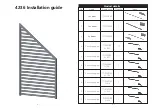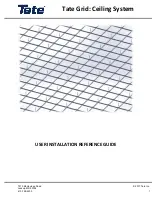
6
/
20
during the heating phase.
•
The glassware is designed for operation under a vacuum of up to 10 mbar. The equipment
must be evacuated prior to heating (see chapter “Commissioning”). The equipment must only
be aired again after cooling. When carrying out vacuum distillation, uncondensed vapors
must be condensed out or safely dissipated. If there is a risk that the distillation residue could
disintegrate in the presence of oxygen, only inert gas must be admitted for stress relief.
•
CAUTION! Avoid peroxide formation. Organic peroxides can accumulate in distillation and
exhaust residues and explode while decomposing!
•
Keep liquids that tend to form organic peroxides away from light, in particular from UV rays
and check them prior to distillation and exhaust for the presence of peroxides. Any existing
peroxides must be eliminated. Many organic compounds are prone to the formation of
peroxides e.g. dekalin, diethyl ether, dioxane, tetrahydrofuran, as well as unsaturated
hydrocarbons, such as tetralin, diene, cumene and aldehydes, ketones and solutions of these
substances.
•
DANGER OF BURNING! The heating bath, tempering medium, evaporator piston and glass
assembly can become hot during operation and remain so for a long time afterwards! Let the
components cool off before continuing work with the device.
•
ATTENTION! Avoid delayed boiling! Never heat the evaporating flask in the heating bath
without switching on the rotary drive! Sudden foaming or exhaust gases indicate that flask
content is beginning to decompose. Switch off heating immediately. Use the lifting
mechanism to lift the evaporator piston out of the heating bath. Evacuate the danger zone
and warn those in the surrounding area!
•
When the device is switched off or the power supply disconnected, the internal safety lift
removes the evaporator piston from the heating bath.
•
CAUTION! Never operate the device when the evaporator piston is rotating and the lift is
raised. Always lower the evaporator piston into the heating bath first before starting the
rotation drive. Otherwise hot tempering medium may be sprayed out!
•
Set the speed of the drive so no tempering medium is sprayed out as a result of the
evaporator piston rotating in the heating bath. If necessary, reduce the speed.
•
Do not touch rotating parts during operation.
•
Imbalance may result in uncontrolled resonance behavior of the device or assembly. Glass
apparatus may be damaged or destroyed. In the event of unbalance or unusual noises,
switch off the appliance immediately or reduce the speed.
•
The appliance does not start up again automatically following a cut in the power supply.
•
The device is only disconnected from the power
•
supply network if the device power switch is off or the plug is pulled out.
•
The socket for the mains cord must be easily accessible.
•
The voltage stated on the type plate must correspond to the mains voltage.
•
Socket must be earthed (protective ground contact).
•
Removable parts must be refitted to the appliance to prevent the infiltration of foreign objects,
liquids etc.
•
Protect the appliance and accessories from bumps and impacts.
•
The appliance may only be opened by experts.






































